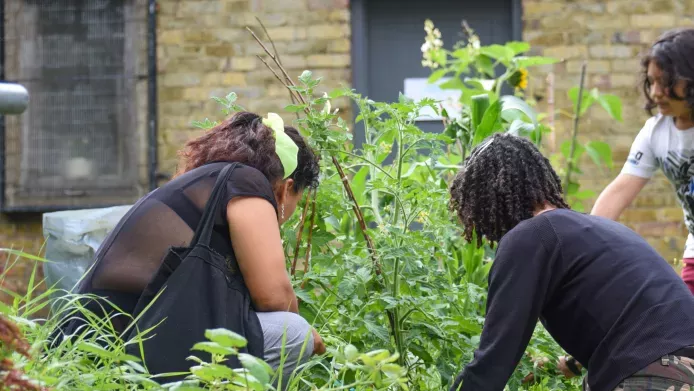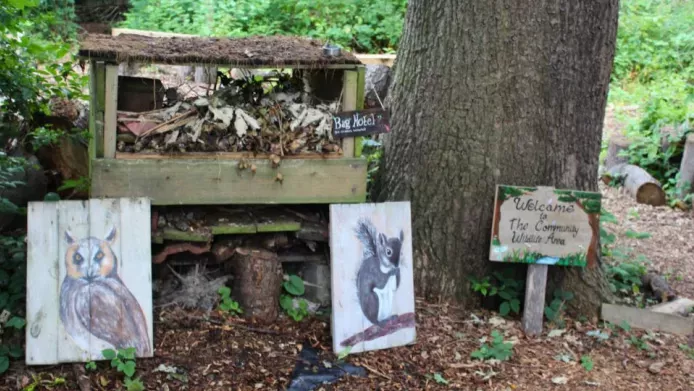Love Heaton Norris is a community group located near the heart of Stockport. Five years ago they started developing a Community Wilding Garden on a brownfield site. They joined the 2023 Grow Wild Community Programme to enhance the landscape for wildlife and encourage locals into the previously unloved space.
We spoke with the project leaders and volunteers, to learn more about the project.
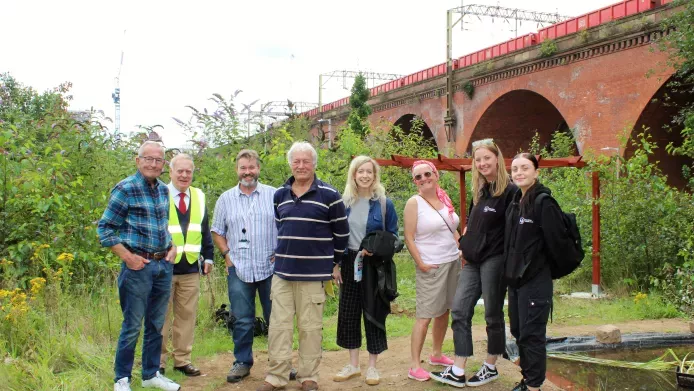
When we first committed to the garden in 2018 there was nothing, it was just rubble. Heaton Norris is a historic area, which goes back to 1200 AD. Until about 50 years ago, our garden used to be terraced housing and a road.
When we first committed to the garden in 2018 there was nothing, it was just rubble.
Thousands of people come through Heaton Norris as the area is somewhat of a gateway into Stockport. The garden is right by the A6 and a short walk from Stockport station. We currently have a walkway through the site and a bench that have been provided by the local council. These are well used by the community, including by train and plane spotters, as a railway viaduct (the world’s biggest brick structure when it was built in 1840) runs adjacent to the garden and the site is not far from Manchester airport.
We built another seating area out of pallets as lots of places have these going spare, you just have to ask. We now have many local residents who make use of the new seating throughout the day and evening, including nearby NHS workers. We want to make another path that leads footfall from the nearby bus stop to our seating areas.
The trees surrounding the garden have been here a long time, but we nearly lost when they were almost cut down, part of clearance for the car park next door (luckily project leader Phil cycled past at the right time and prevented it with support from the local tree officer).

A large part of our Grow Wild project has been to create a scrape in the garden to encourage more wildlife. A scrape is a shallow pool that holds water to support aquatic plants, invertebrates, amphibians and birds. Because of the depth a scrape tends to hold water seasonally, often drying out in the late summer but remaining damp, supporting wetland plants and insects. Our scrape may, or may not dry out, in summer (it's too early to tell), but we'll make sure it never completely dries out. Scrapes can become attractive bog gardens as well.
A scrape is a shallow pool that holds water to support aquatic plants, invertebrates, amphibians and birds.
The ground underneath the scrape was once a road, so we had to use a digger to clear and excavate the area. After the earth had been prepared, we filled the new pool with water, UK native aquatic and bog plants, such as bog arum (Calla palustris), marsh marigold (Caltha palustris), and Yellow Flag Iris (Iris pseudacorus).
 The garden before the scrape
The garden before the scrape
 The garden with the scrape
The garden with the scrape
There are also stones in the scrape which allow wildlife to get in and out, which should attract lots of different animals and insects.
By next year we’re hoping to get frogs and toads. We also obtained a pergola to put beside the scrape, with climbing plants and bird boxes to put on it.

Over the last two years we have also planted 100 kilos of King Alfred Daffodil bulbs, providing colour along the full front of the site in spring. Across the site there are masses of ferns, amazing poppies, and a lot of teasel, which goldfinches love. We’ve seen lots of insects including cabbage white butterflies and red admirals.
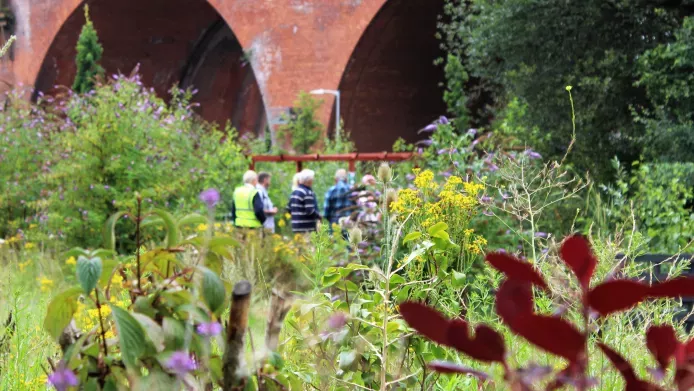
Local builders up the road provided us with a large tank that holds a tonne of water. This has enabled us to collect and store water run-off from the gutter of a pub which backs onto the garden. We also made a deal with the pub’s owner, paying by the hour to connect our house to his tap when we need extra water. That‘s been a benefit of having an urban project: if you plant trees or wildflower meadows in the middle of nowhere, not many people walk past and help, whereas here there are lots of people and many offer to help out.
The site has now become a wildlife corridor, we're cataloguing all the plants and wildlife we spot. We’ve also introduced log piles, a hedgehog house and a bug hotel into the garden. We are waiting for our local council to install some new bat-friendly 'green' lights in the community garden on the access path to the scrape, as bats hibernate in the arches of the viaduct. Foxes and badgers also live around the undisturbed embankment beneath the viaduct. In the future we want to install a camera to monitor wildlife around the site.
The site has now become a wildlife corridor
A year from now it's going to be different again here, these things are never finished!

Grow Wild's Community Programme
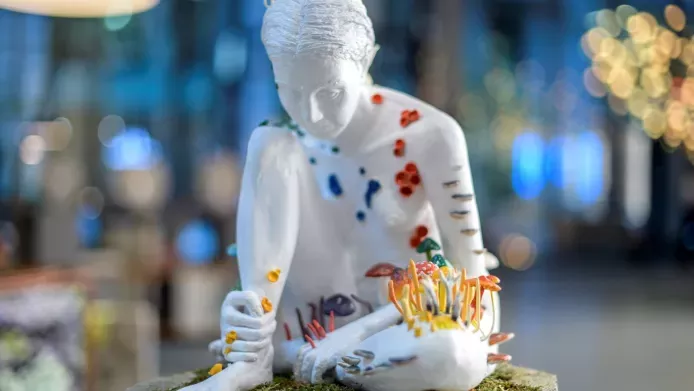
Previous projects
